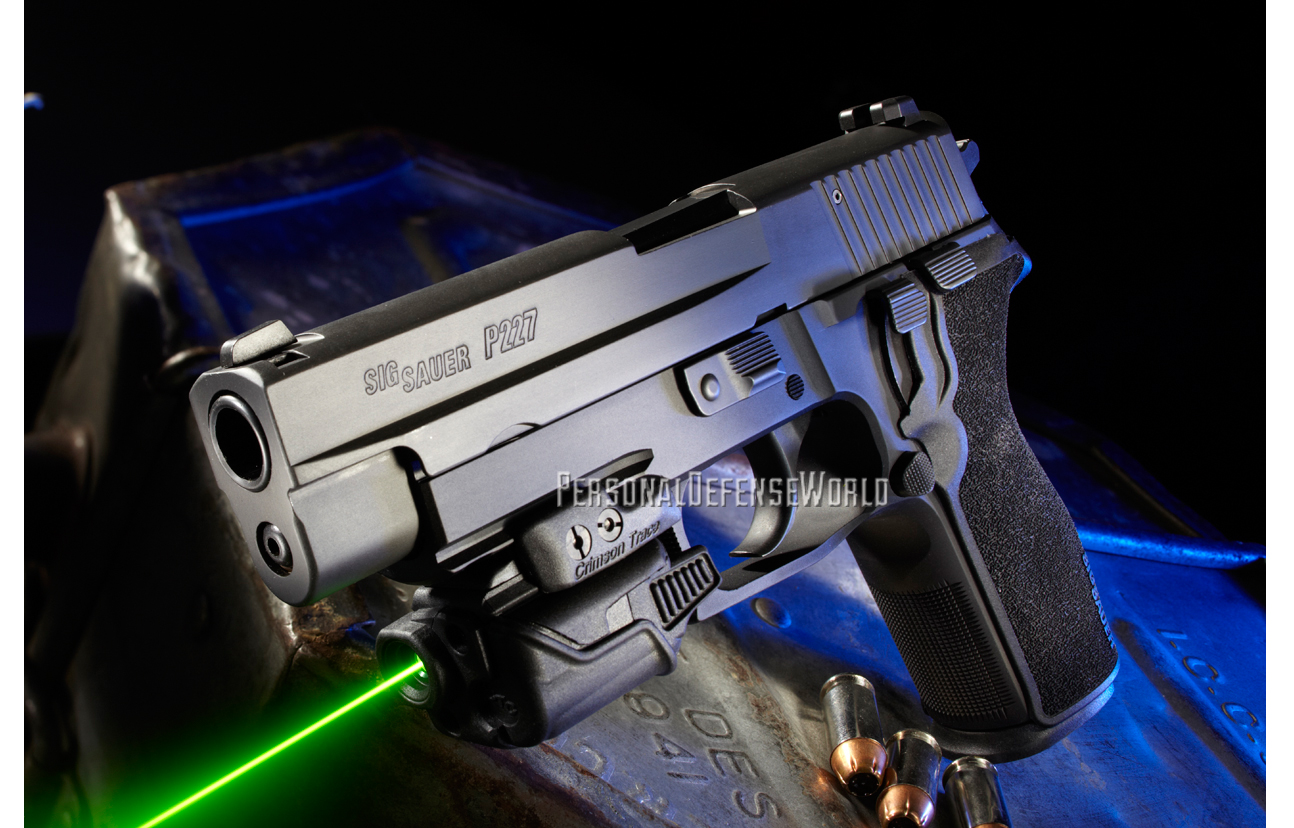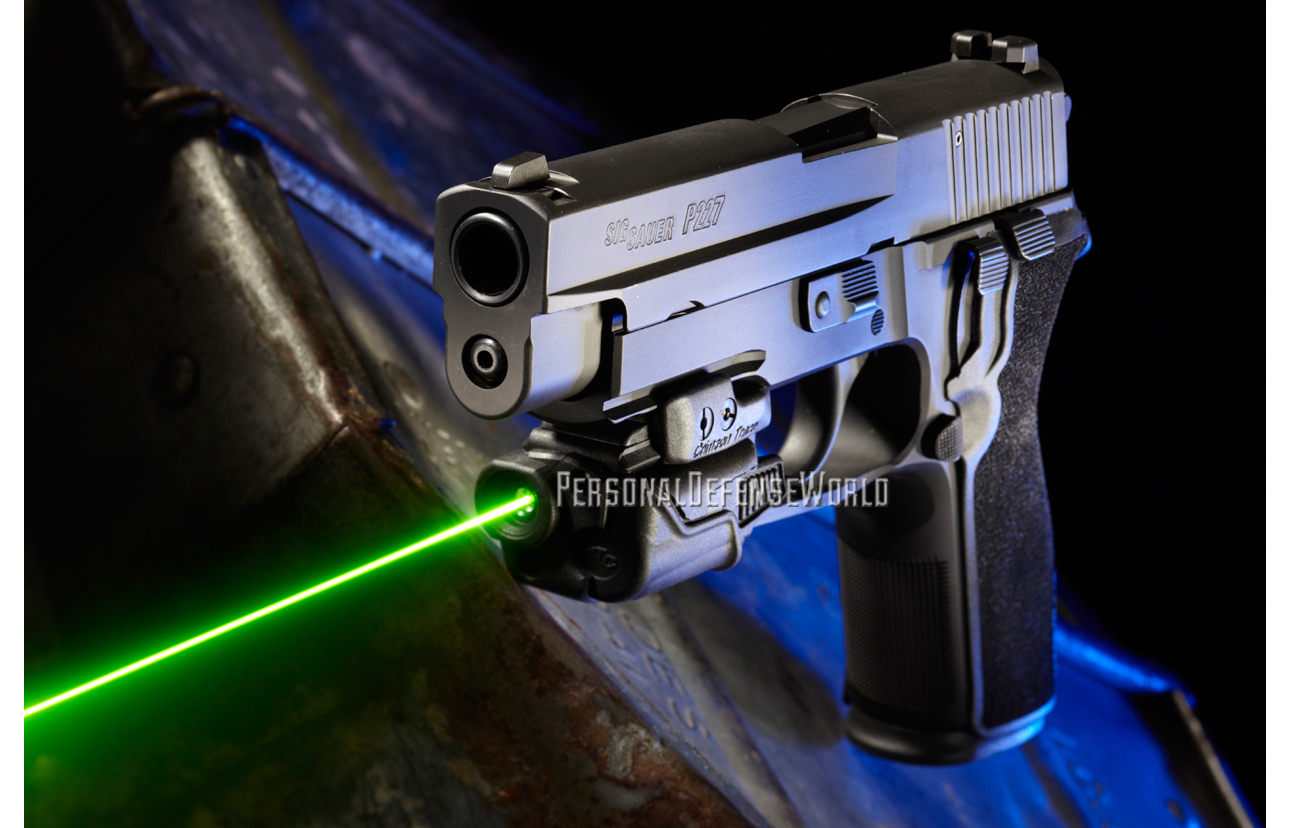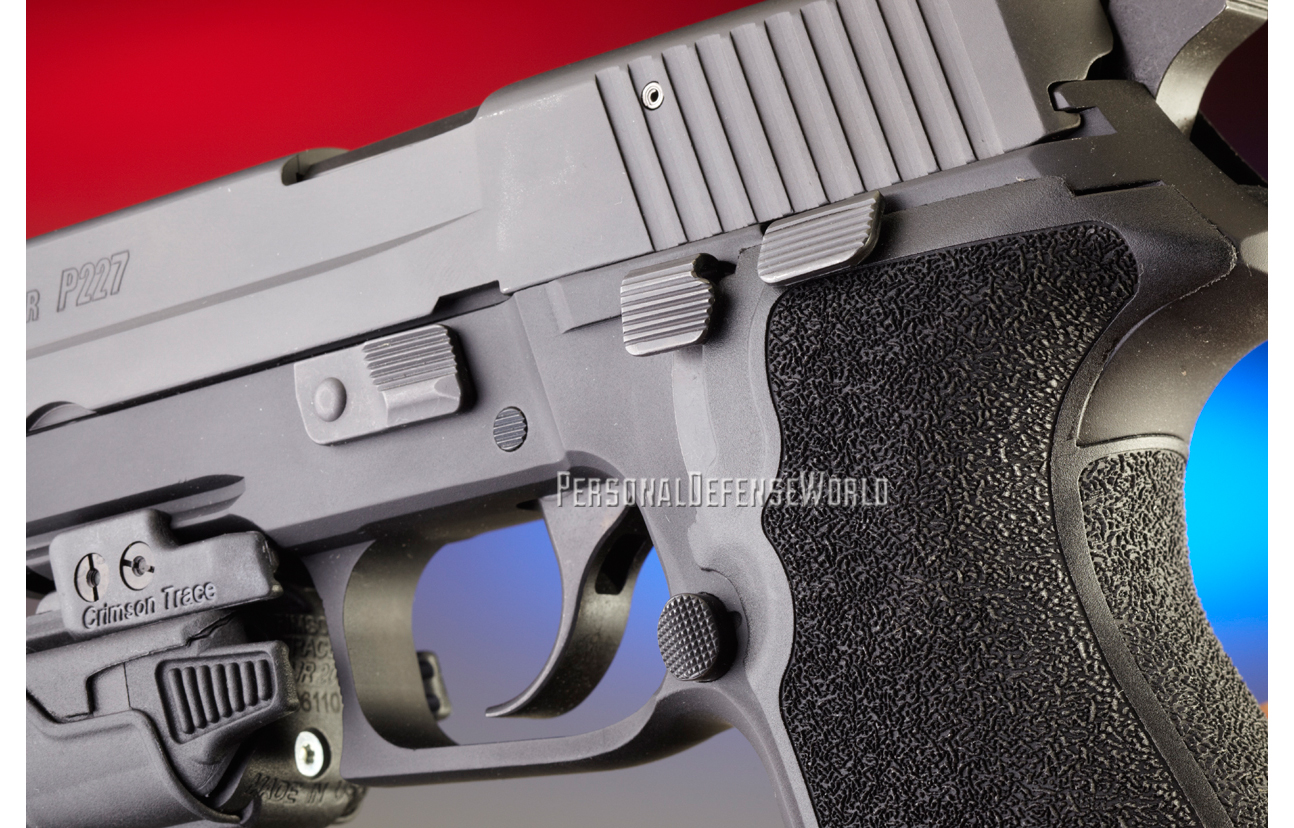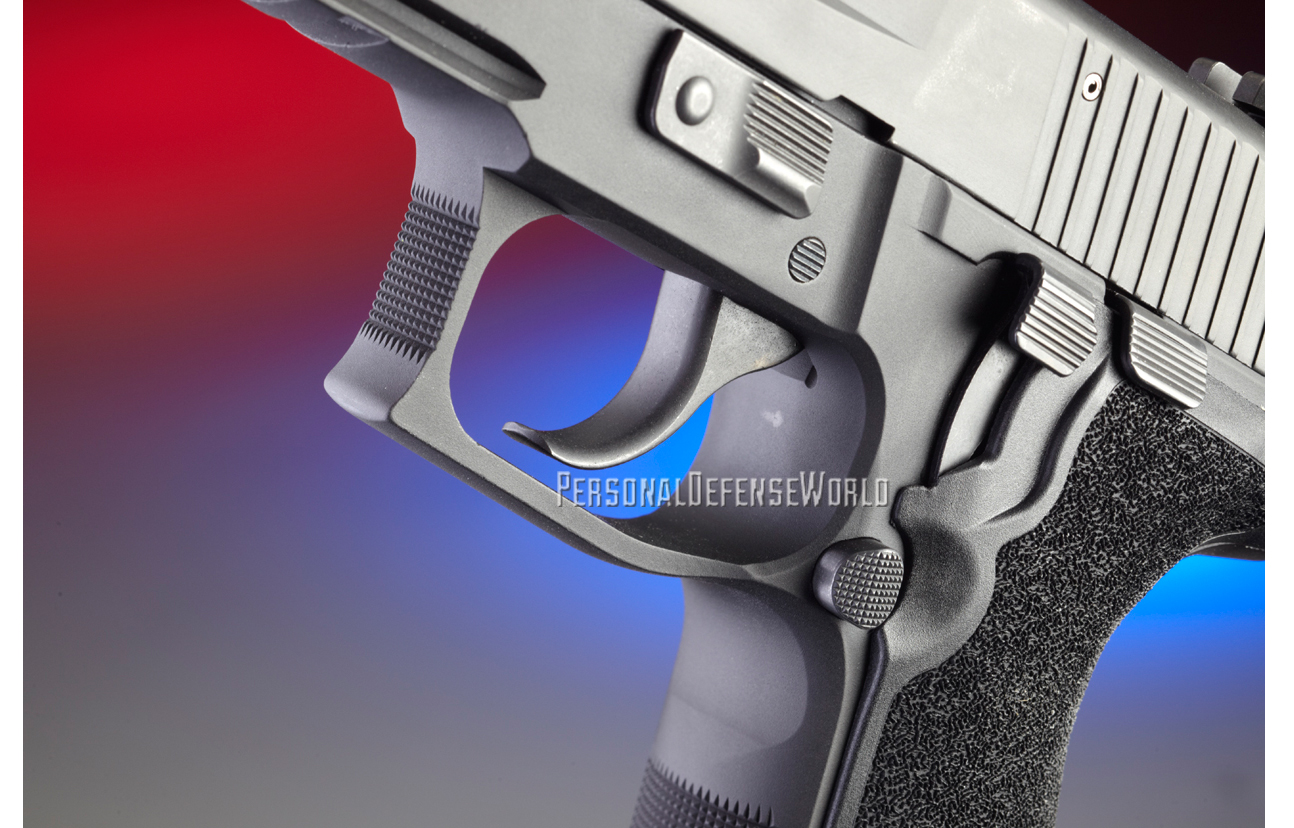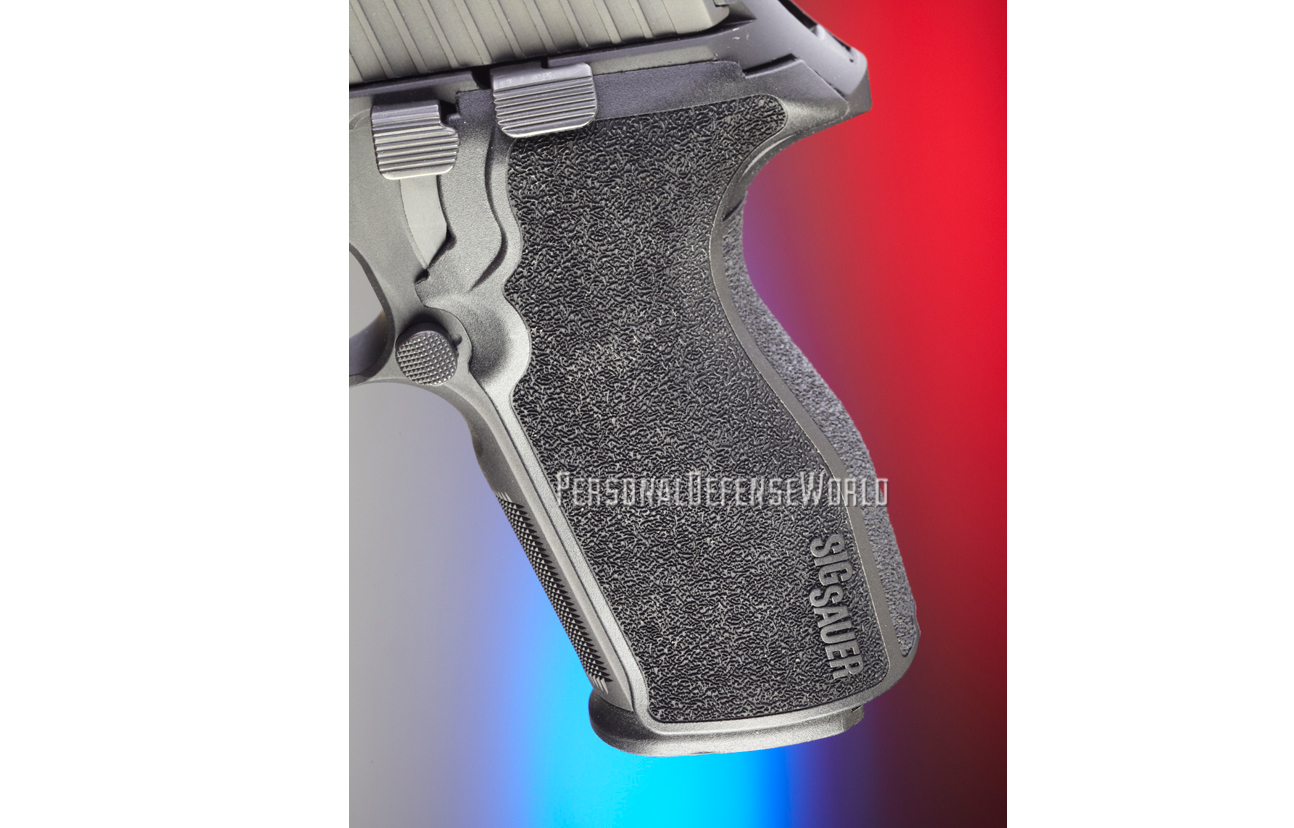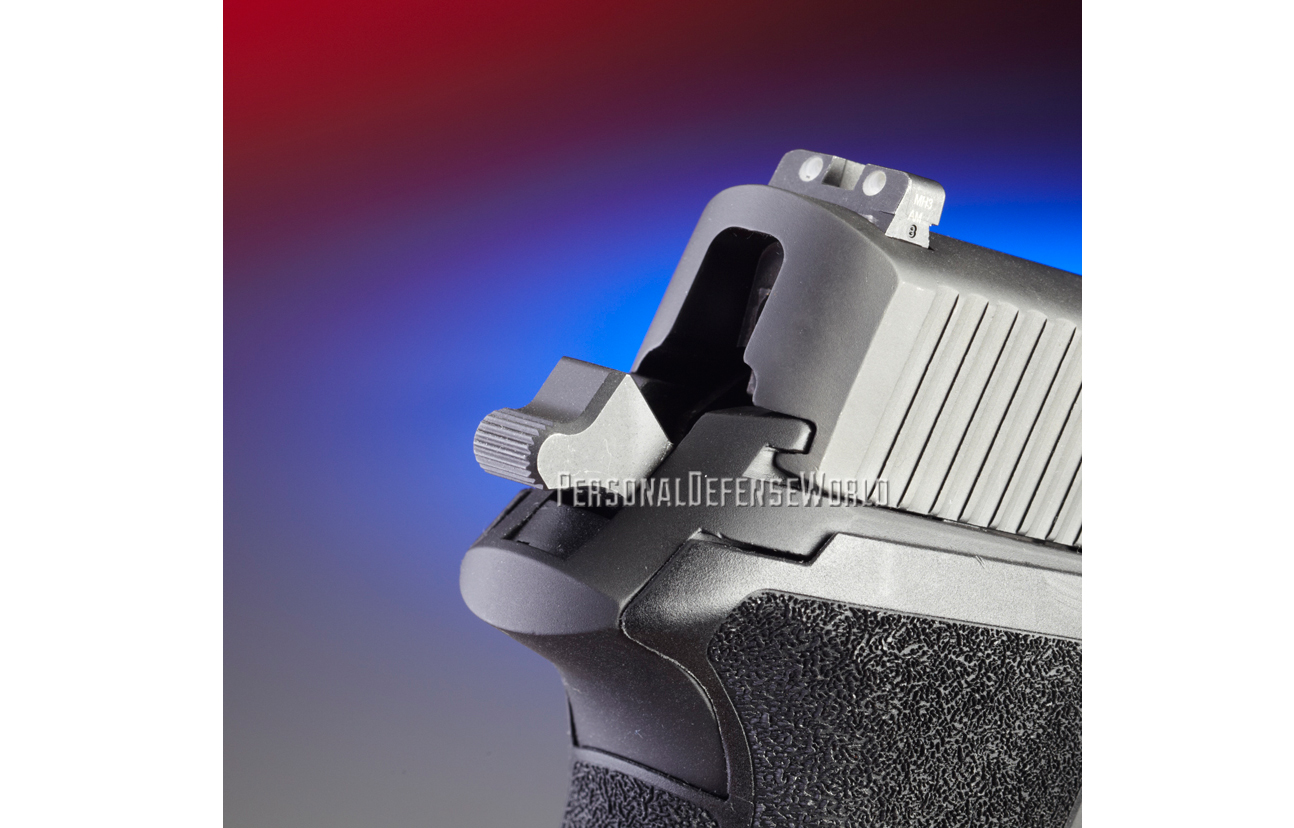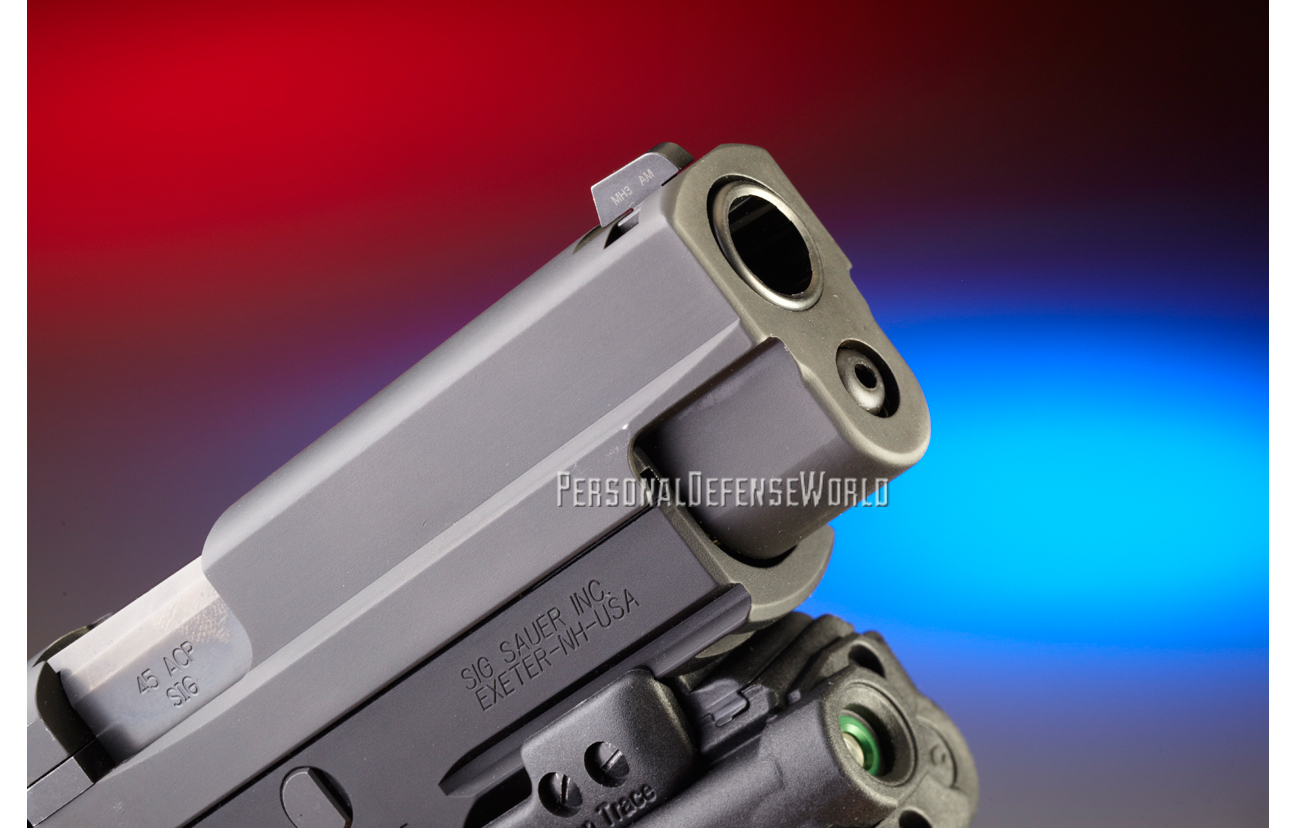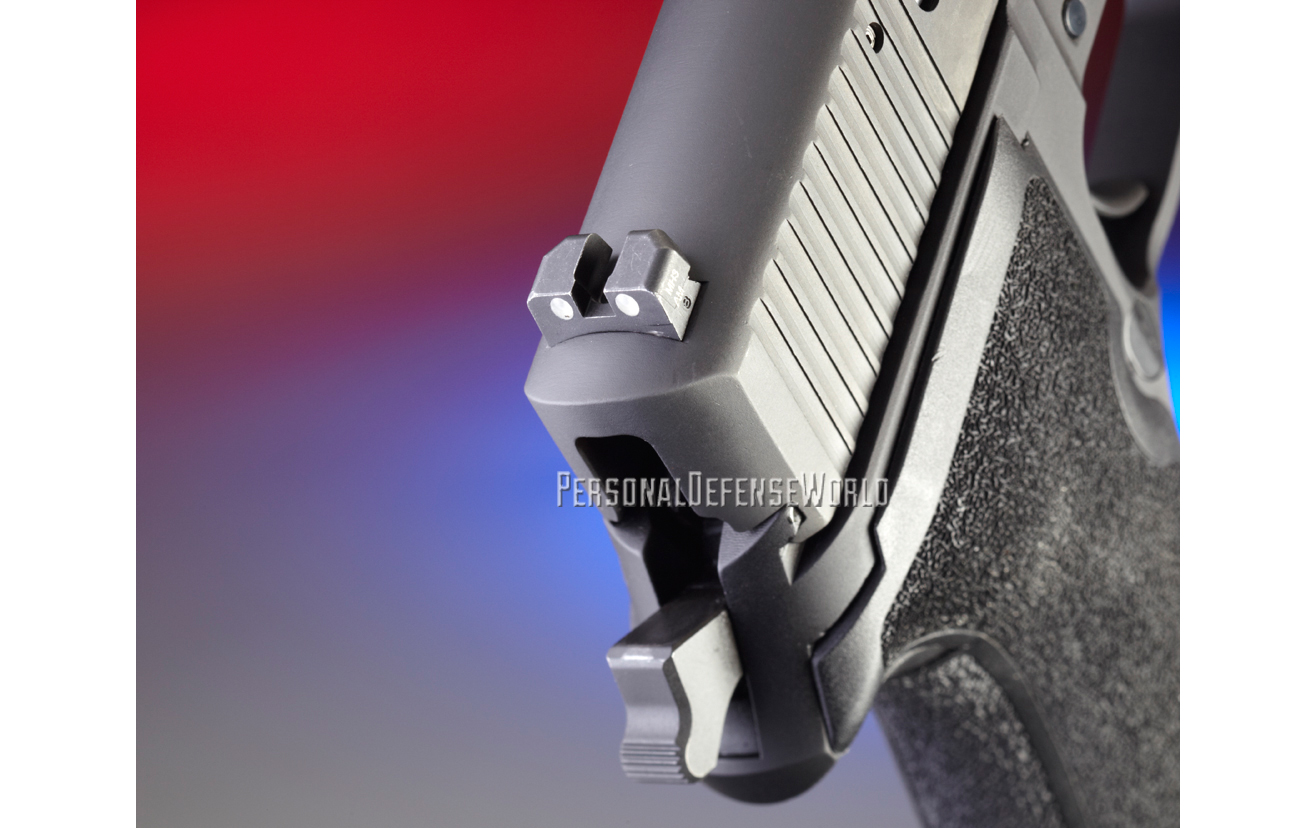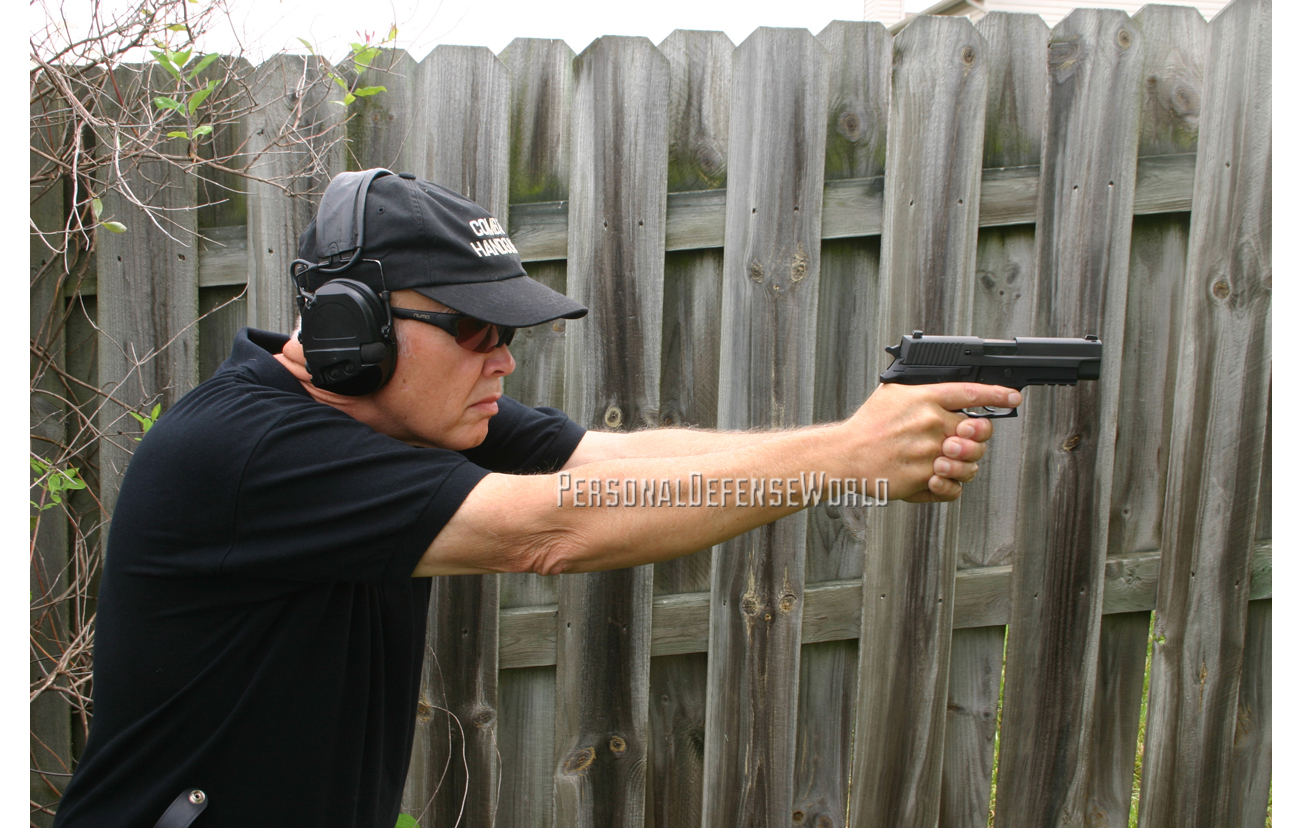“SIG,” an acronym for Schweizerische Industriegesellschaft, which is German for Swiss Industrial Company, has been around since 1853. Early on, the company began making long arms for the Swiss military, but in 1970 it decided to begin making handguns. As Swiss law has limits on handgun production, SIG chose to work with the German firm of Sauer & Sohn, and in 1975 came out with the Sig Sauer P220 pistol. Over the years, as the line has increased, the association and names changed and an American division was created, now headquartered in Exeter, New Hampshire. In 2007, what since 1985 had been Sig Arms became Sig Sauer.
Sig has been a longtime supplier to the U.S. military and law enforcement agencies. The company claims to have about one-third of the law enforcement market, and its 9mm P226 was tied with Beretta during the XM9 Service Pistol Trials in 1984; Beretta won due to a lower-priced package, but the Sig P226 went on to arm Navy SEALS, and the Army adopted the P228 (M11) for use as a compact pistol. Sig Sauer also runs a training facility called the Sig Academy, where advanced weapons skills are taught.
A large-frame model originally available in 9mm, .38 Super and .45 ACP, the Sig P220 was one of the company’s first handguns imported into the U.S. Since then, it’s only been produced in .45 ACP and has a single-column magazine with a standard capacity of eight rounds. Recently, Sig Sauer introduced the large-frame P227, which is also chambered for the .45 ACP cartridge, but has a staggered, flush-fit magazine that holds 10 cartridges plus one in the chamber for a total capacity of 11 rounds. There is also an extended magazine available that increases the cartridge count to 14+1.
Advertisement — Continue Reading Below
Gun Details
Like many Sig Sauer pistols, the P227’s operating mechanism is based on the Browning locked breech/short recoil system. However, unlike the M1911, it doesn’t use links and internal locking lugs and recesses. Instead, the barrel is cammed up and down, with an enlarged section of the barrel’s breech locking into the ejection port. This is a very rugged design that simplifies the operation of the pistol and the manufacturing process with no disadvantages. This mechanism is mated to a traditional double-action/single-action (DA/SA) trigger system, which has a hammer-drop lever on the left side of the receiver to lower the hammer from the fully cocked position safely.
Currently, there are three versions of the P227 being made by Sig Sauer. The first is the Nitron, which has a 4.4-inch barrel. Then there is the P227 Carry, which has a more-compact 3.9-inch barrel for easier concealment, and finally there’s the P227 Carry SAS 2B, which has the same 3.9-inch barrel, but has been given Sig’s “Anti-Snag Treatment,” making it even better for plainclothes, off-duty or self-defense uses, plus it has the Sig Short Reset Trigger. All three models have a stainless steel slide with Sig’s exclusive Nitron finish and a black hardcoat anodized alloy frame, along with a textured polymer, one-piece, ergonomic grip.
I chose to evaluate the P227 Nitron, and the pistol arrived inside a lockable, plastic carrying case that had a foam/rubber liner in the bottom half with cutouts for the pistol and the extra 10-round magazine that was included. There was also an owner’s manual, warranty, product registration form, a safety padlock and a small container of Mil-Comm TW25B lubricant/protectant. A cursory inspection of the exterior of the pistol revealed Sig’s renowned excellent workmanship—there were no tool marks or blemishes on any metal surface. The Nitron finish on the slide and the anodizing on the receiver were well done, leaving the entire handgun a non-reflective, dark charcoal gray color. The black, one-piece grips are well proportioned. The stippled side panels and backstrap form a beveled magazine well. The exposed grip frame of the frontstrap is finely checkered and has a dished-out area just below the triggerguard that provides for a high shooting grip.
Advertisement — Continue Reading Below
The P227 has the customary Sig Sauer control configuration platform, with the takedown latch on the receiver, just above the trigger. As you move backwards, you’ll next find the decocking lever and, immediately behind it, the slide release lever. An inch below the decocker is the magazine catch. There is no external manual safety, but the P227 features Sig’s Four-Point safety system, which incorporates the decocking lever, patented automatic firing-pin block safety, safety intercept notch and trigger bar disconnector.
The DA trigger has a pull weight of a little over 10 pounds and is somewhat long but smooth. The SA pull has the requisite amount of take-up and a bit of creep before breaking between 4 and 5 pounds. A wide, smooth-faced trigger makes the pull seem even lighter, and the front of the generously sized triggerguard has a small, serrated panel. The external hammer is smallish, with a stubby spur that is serrated to make manual cocking easier. Just forward of the triggerguard, on the dust cover, is Picatinny rail, which is useful for mounting tactical lights, laser sights or other accessories.
P227 slides are machined from stainless steel bar stock and then coated with the wear-resistant and rust-inhibiting Nitron. Ten serrations at the rear provide a good gripping surface for retracting the slide, and there’s a well-proportioned ejection port. The extractor is rugged and powered by a coil spring. The 4.4-inch barrel has conventional rifling. My test gun was fitted with SIGLITE night sights mounted in dovetails, allowing for windage adjustments; fixed contrast sights come standard. An interesting side note is the fact that the P227 Nitro can accept any slide assembly from the P220. That means the P227 Nitron can be easily converted to a Carry, SAS, Stainless or Super Match version by simply swapping the slides. Plus, with its P226-size frame, you get a big-bore caliber without an oversized grip, and the P227 will fit in any holster that takes a rail-equipped P220 or P226 pistol.
Advertisement — Continue Reading Below
Range Time
I took the Sig P227 Nitron to the range with three different brands of .45 ACP ammunition, including some vintage Black Hills “Blue Box” remanufactured rounds carrying 185-grain JHP bullets. I wanted at least one test cartridge with a lighter-weight bullet. My other two selections both had traditional 230-grain bullets: Federal’s Tactical Law Enforcement ammunition featuring Hydra-Shok JHP bullets and Speer’s Gold Dot hollow-point (HP) rounds. Gold Dot HPs are unique in that the jacket is “plated” onto the lead core, and a punch creates the hollow nose cavity, which leaves a small disk of jacket material down inside the bullet, giving it the “Gold Dot” moniker.
After recording velocity data, I put up three bullseye targets at the 25-yard line. Using a sandbag rest on the range bench, I proceeded to fire three 5-shot groups with each brand of .45 ACP ammo. The SIGLITE sights have a three-dot arrangement, and were easy to see and line up on target. I did all my shooting in the SA mode during the accuracy evaluation. When I did my part, the P227 performed in the manner that a service-grade autoloader should. My tightest five-shot cluster that day, produced with the Federal Tactical ammo, measured 2.28 inches. Groups with all of the ammunition averaged anywhere from 2.5 to not quite 3.5 inches. I found that my point of aim needed to be at the top of the black bullseye with the 185-grain JHP ammo and dead on the orange target center with 230-grain loads.
I then ran the Sig P227 through a 30-round practical pistol course on an old-fashioned K-zone humanoid target, at one time the standard for LE use. My magazines were loaded with a mix of the .45 ACP test cartridges, and I inserted one in the P227, doing a “lock and load,” and then holstering. Two spare magazines went into the left outer pocket of my cargo shorts. I engaged the target at 3 yards, firing six rounds strong-hand only and six support-hand only, with a magazine change. I used a point-shoulder stance with my support arm angled across my chest for additional protection.
Advertisement — Continue Reading Below
Moving back to 7 yards, I drew the pistol and fired two rounds center-mass with a three-second time limit. I then kept the weapon at “high ready” for the next series of double-taps (with a two-second limit for each) for a total of six shots. Next came a triple-tap drill, again from 7 yards, performed much the same as the previous exercise and exchanging the magazine when needed. The third shot can be aimed at the head or pelvis to make this a body armor drill. The final portion of the course takes place at 15 yards and requires shooting from a barricade position, with two shots support-side standing, two shots strong-side standing and then two shots kneeling, strong-side, in 20 seconds. I went forward and found all of my shots had landed center-mass. On a regulation target I’d have scored a “possible.” During this phase of the evaluation, both the weapon and the carry gear worked flawlessly.
After shooting comes cleaning, so I’ll quickly touch on the takedown process of the P227 Nitron. First, clear the weapon and make sure it’s safe, double-checking to make sure there is no cartridge in the chamber and the magazine has been removed. Fully retract the slide and engage the slide stop to hold it in place. Turn the takedown latch downward to a vertical 6 o’clock position; now the slide can be moved forward off the frame. The recoil spring can now be removed from below the barrel. Take the barrel itself out by lifting up and back. This is all the disassembly necessary for normal cleaning. Reassembly is in reverse order. The magazines should also be checked after each shooting session and cleaned occasionally.
Final Notes
I was very pleased with the overall performance of the Sig P227. Unlike many of today’s pistols, it doesn’t have an interchangeable backstrap, but it fit my medium-sized hand comfortably, and I’ve never really picked up a Sig Sauer pistol that wasn’t tip-top in the ergonomics department. As a gun writer, I’m always happy to evaluate a firearm that works and works well, as did the P227 Nitron. I’m less impressed with what a handgun will do on a paper bullseye target than what it will do when fired rapidly and repeatedly on a combat course, so for my money I don’t think you could do much better than the Sig Sauer P227 Nitron if you want a full-sized handgun in .45 ACP. For more information, visit sigsauer.com or call 603-772-2302.
Advertisement — Continue Reading Below
BUY NOW! www.personaldefenseworld.com/subscribe/combat-handguns.
